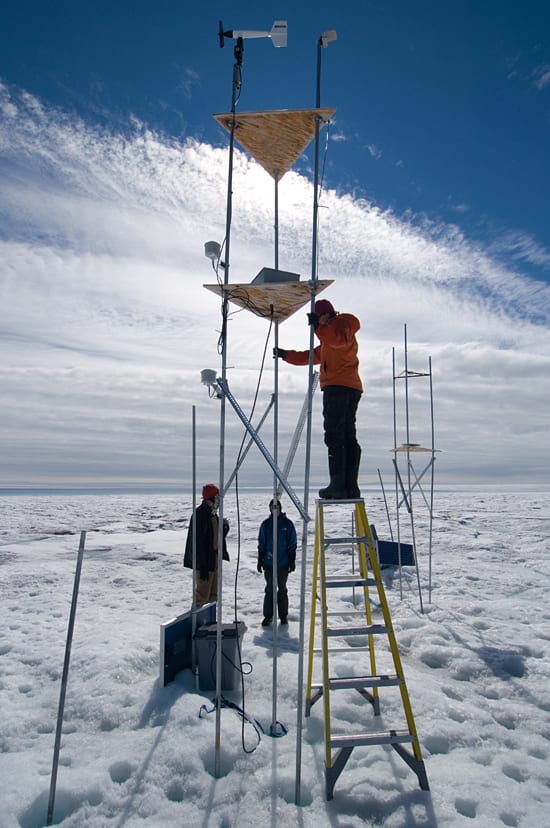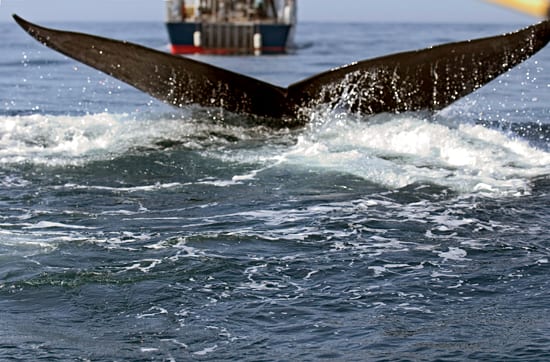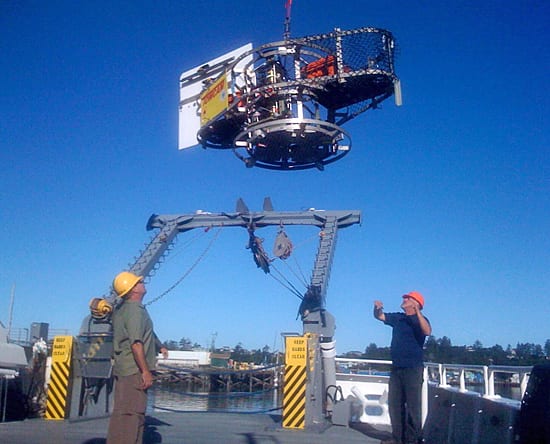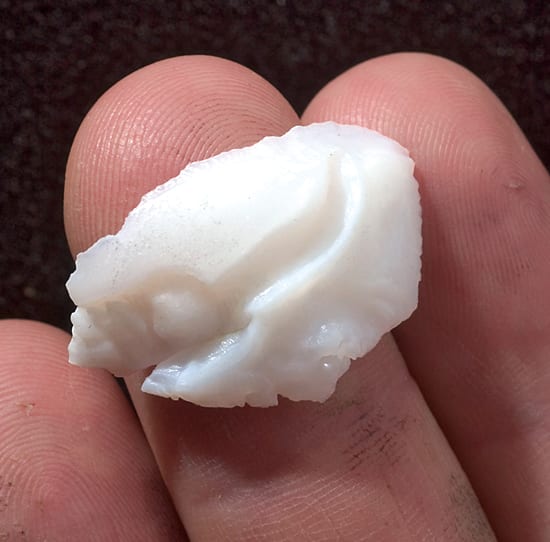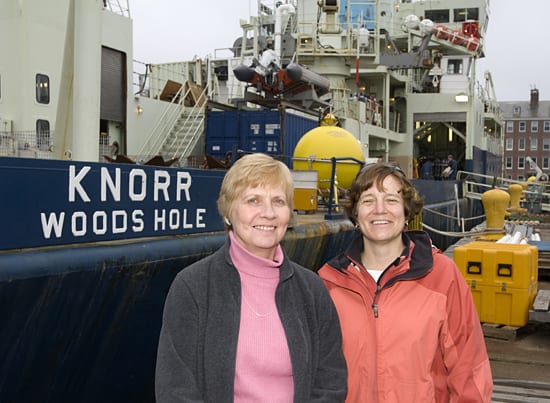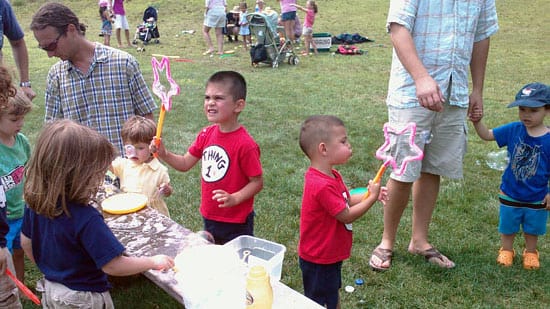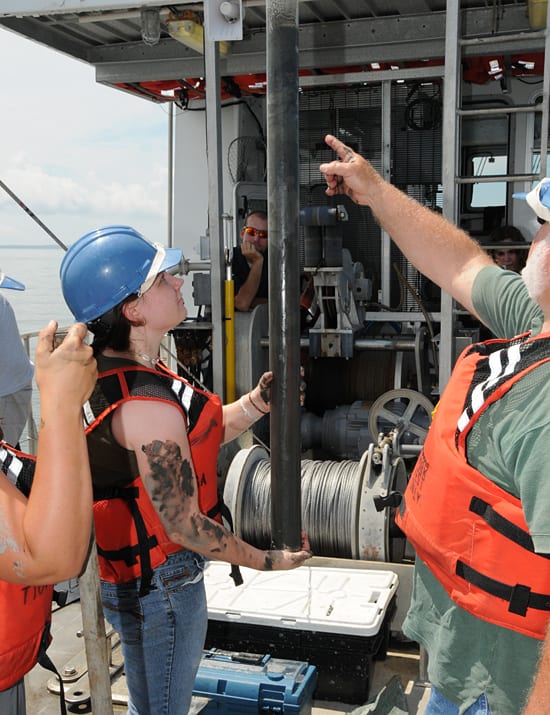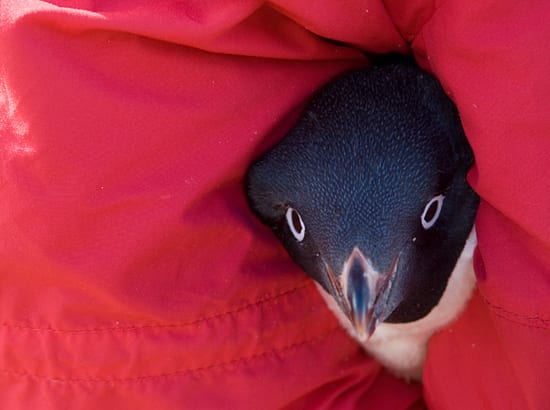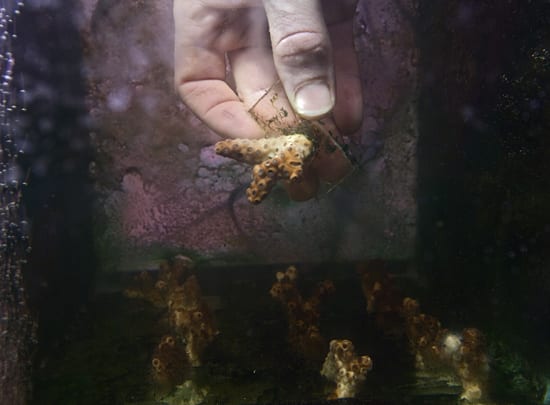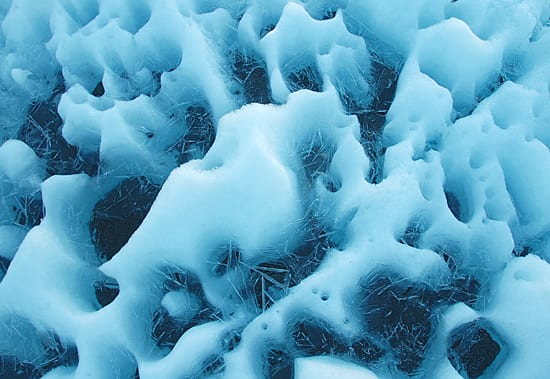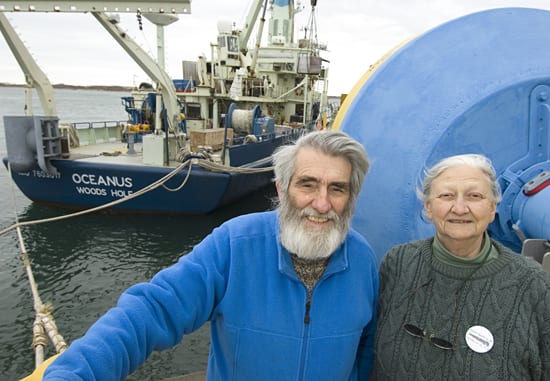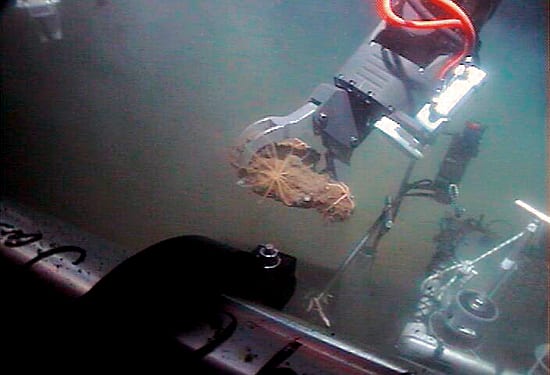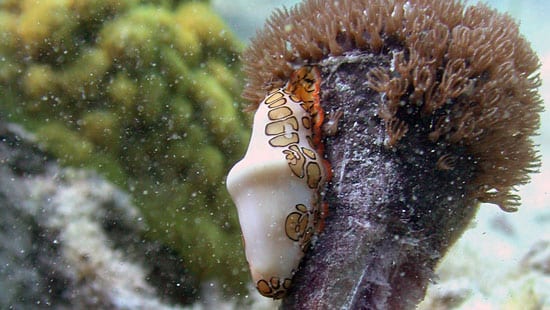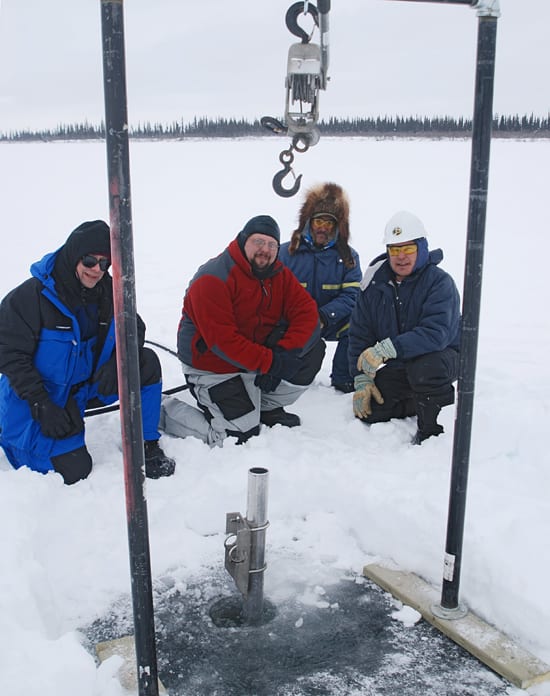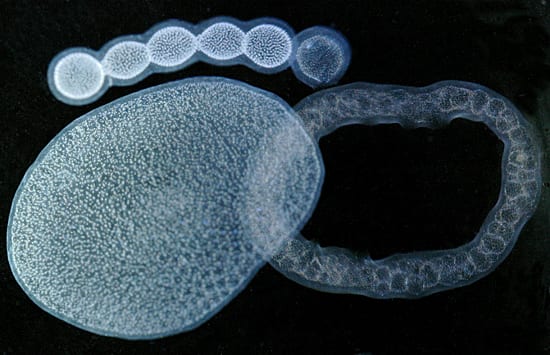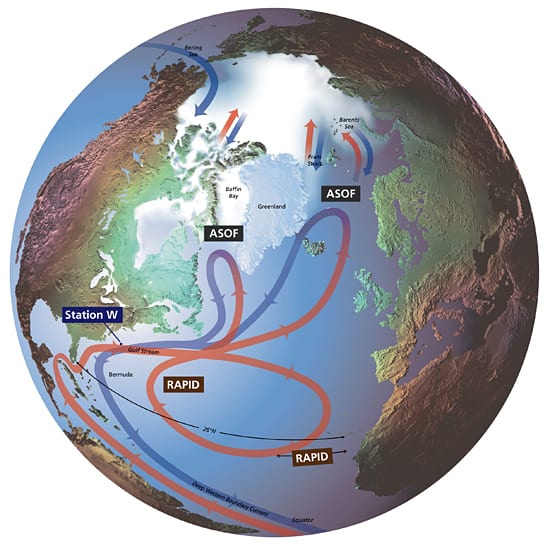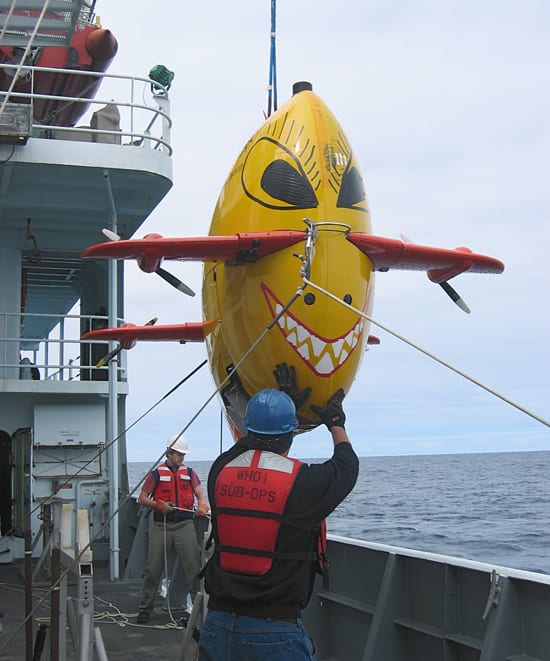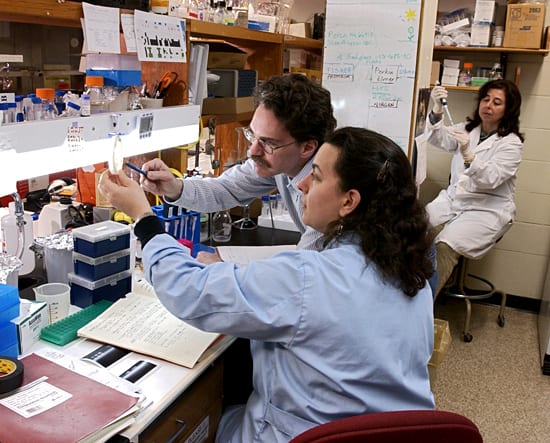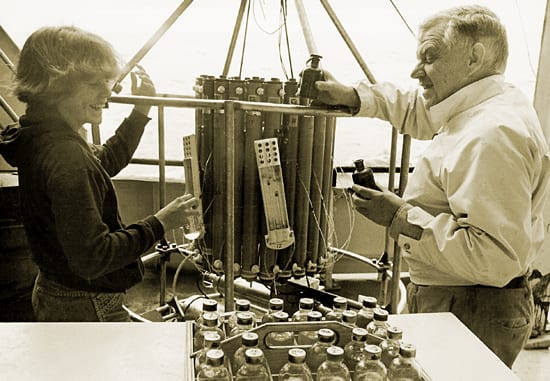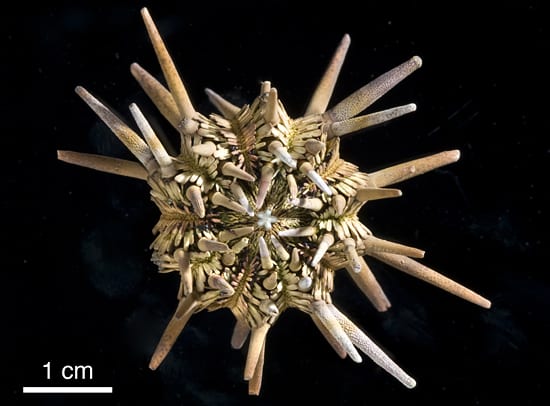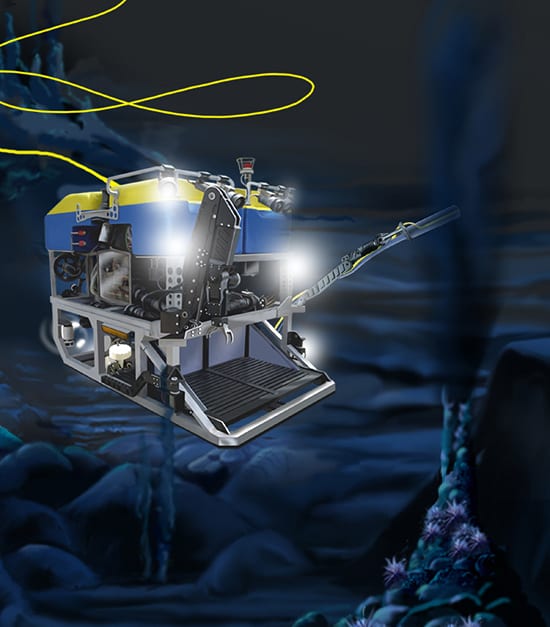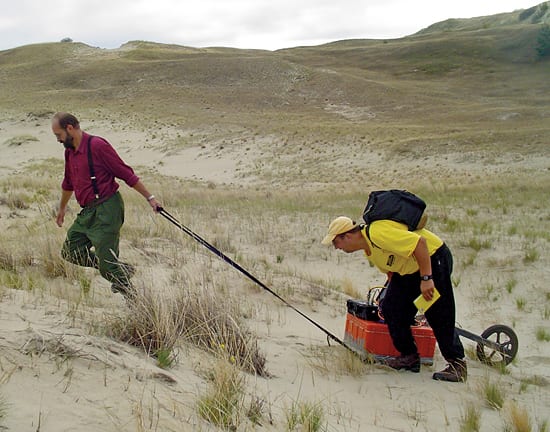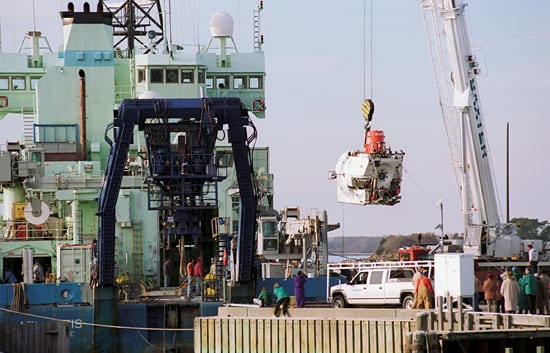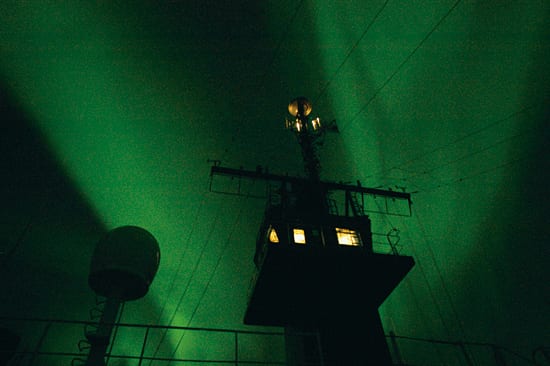Multimedia Items
Looking long term in Greenland
WHOI glaciologist Sarah Das (climbing to reach a temperature sensor) spent July 2008 in Greenland studying lakes that form when the ice surface melts each year. The goal of this project, and many…
Read MoreDiving for Dinner
A North Atlantic right whale dives astern of WHOI’s coastal vessel Tioga during a research cruise to study their feeding. Vulnerable to ship strikes and entanglement in fishing gear, the…
Read MoreLoading the Camera
WHOI’s Towed Digital Camera and Multi-Rock Coring System—more commonly known as TowCam—is loaded onto the research vessel Wecoma in Newport, Oregon in mid-August 2008. WHOI research associate Erich Horgan (not…
Read MoreThe Ear Bone’s Connected to the Fish Home
WHOI biologist Simon Thorrold holds a fish otolith—an ear bone—that can serve as a natural tag to reconstruct the history of temperatures and seawater chemistry wherever a fish has lived.…
Read MoreNext Stop: The Cold North Atlantic
Katarina Fraser (left), a science teacher at the Perkins School for the Blind, and Amy Bower, senior scientist in the WHOI Physical Oceanography Department, say goodbye to land and prepare…
Read More2008 Summer Picnic
Core Faculty
Retired WHOI research associate Bruce Tripp (right) explains the fundamentals of how to retrieve a seadiment core, as WHOI summer student fellow Amanda O’Rourke holds their latest catch. Every summer,…
Read MoreRugby hold
There is an approved method of holding a penguin, with its head tucked under an arm. It’s called the rugby hold, so named because, from the front, the penguin’s torpedo-shaped…
Read MoreCorals in a changed sea
Postdoctoral researcher Justin Ries holds a temperate-water coral—one of many shell-forming marine animals he grew under elevated carbon dioxide levels, which increases the seawater’s acidity. Working with Anne Cohen and…
Read MoreAttack of the cryoconites
Greenland’s ice sheet is pockmarked with cryoconites, or holes filled with melted water. They form when the Sun melts darker dust and silt on the ice sheet, creating round or irregular…
Read MoreTogether in life and in science
Science and a full life go hand-in-hand for Rudolf Scheltema and Amélie Scheltema, researchers in the WHOI Biology Department who together have devoted over a century to understanding the invertebrate…
Read MoreArmed and Ready
On its first mission in 2002, the newest Jason vehicle—and its sophisticated manipulator arm, shown here—operated for nearly 300 hours without a failure. The ROV’s two manipulators can maneuver payloads…
Read MoreCorals vs. snails on a tropical reef
Ice-Road Corers
WHOI researchers Daniel Montlucon (left), Liviu Giosan (second from left) and two Inuit guides take a break from extracting sediment cores from a frozen Arctic lake. The research team, led…
Read MoreDrifting blobs in DNA database
Looking like bubbles or smoke rings, these half-inch chains, loops, and spheres are actually common planktonic animals called colonial radiolarians. Each soft shape is hundreds of single-celled animals embedded in…
Read MoreSeas in Motion
Colored arrows show two of the major current systems flowing through the North Atlantic, with red representing the warm surface waters of the Gulf Stream, North Atlantic Current, and associated…
Read MoreService with a Smile
WHOI’s newest autonomous underwater vehicle, Sentry, is launched from the research vessel Thomas Thompson in August 2008 during the AUV’s first scientific expedition. The vehicle surveyed and helped pinpoint several…
Read MoreSequences
WHOI biologists Sibel Karchner (foreground) and Mark Hahn examine bacterial colonies used to clone fish genes that play a role in determining susceptibility to toxic chemicals. Research Assistant Diana Franks,…
Read MoreCTD-side chat
MIT/WHOI graduate student Melinda Hall—now a research specialist in the WHOI Department of Physical Oceanography—shares a laugh with the late Henry Stommel while collecting samples from a conductivity-temperature-depth (CTD) rosette.…
Read MorePenciling-in the future
Postdoctoral researcher Justin Ries, working with Anne Cohen and Dan McCorkle in the WHOI Geology and Geophysics Department, grew this tropical pencil urchin (Eucidaris tribuloides) and other marine shell-building animals…
Read MoreVacuuming on the Sea Floor
WHOI postdoctoral fellow Chip Breier is working to put a new deep-sea particle sampling device on the remotely operated vehicle Jason to collect samples in hard-to-access places. For example, the…
Read MoreDragging for Data
WHOI coastal geologist Ilya Buynevich, right, and Lithuanian colleague Albertas Bitinas use ground-penetrating radar (GPR) to map ancient surfaces beneath Baltic Sea dunes. They are looking for “paleosols”—old soils buried…
Read MoreTime for a well earned rest
The famed submersible Alvin is hoisted off of the research vessel Atlantis and on to the WHOI pier in December 2000 for its periodic top-to-bottom, inside-and-out maintenance. Since 1964, the…
Read MoreNight Lights
In the fall of 2003, the Arctic Edge science team returned to the Western Arctic Ocean to retrieve and redeploy an array of moorings placed in 2002 to observe one…
Read More
